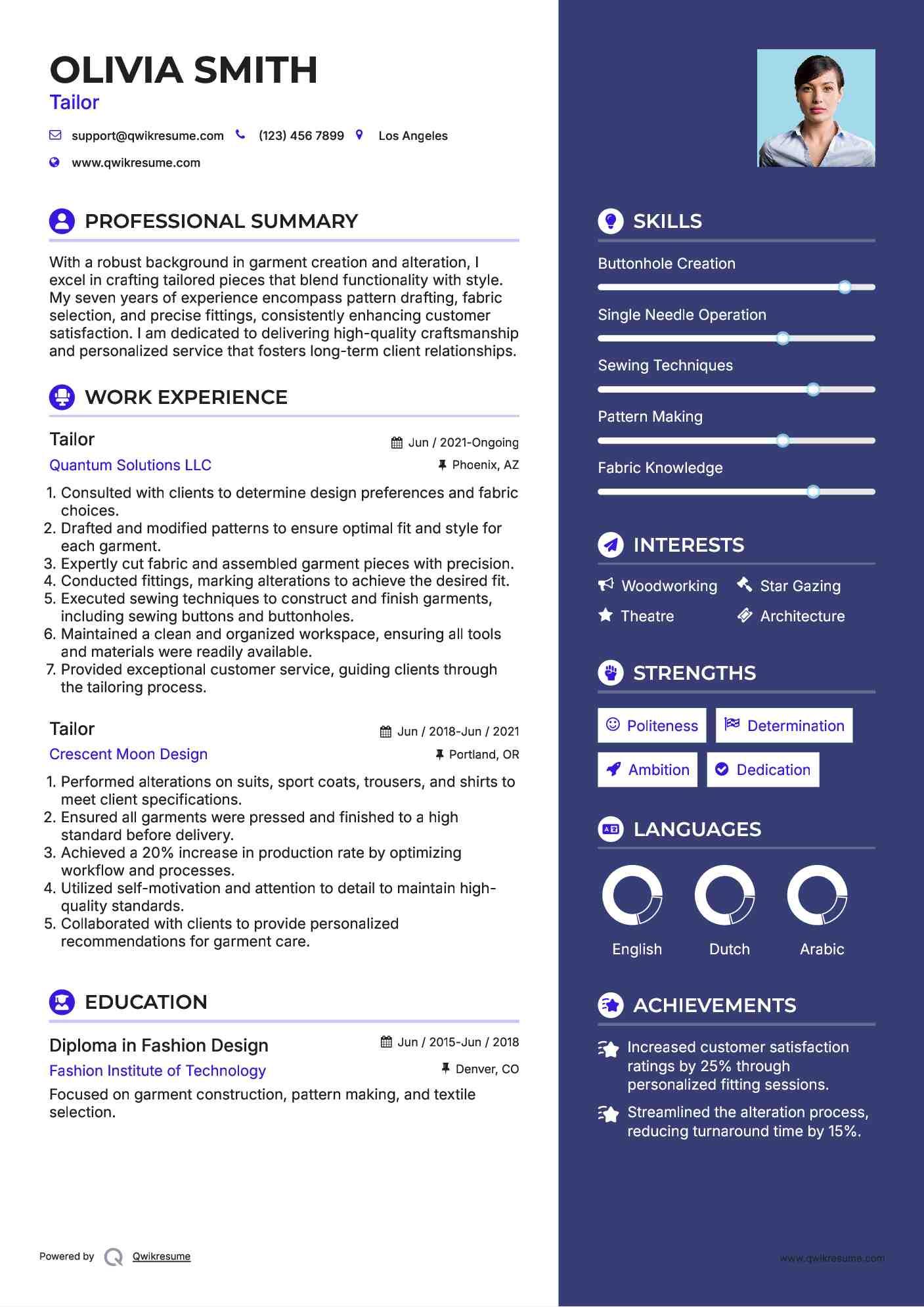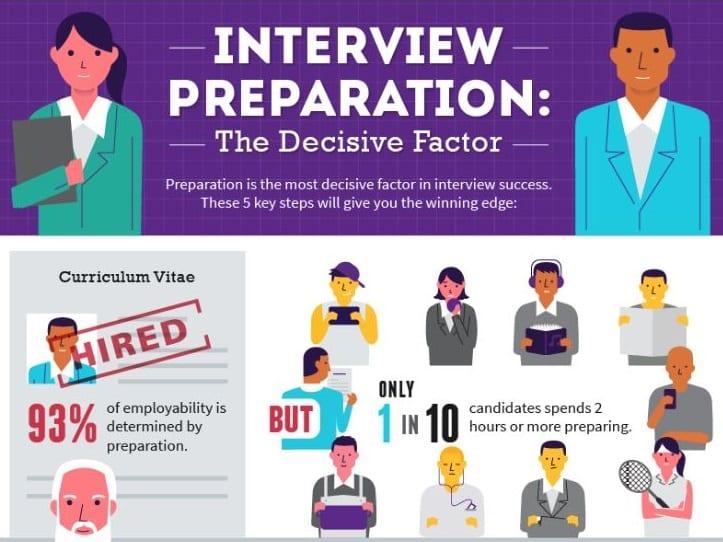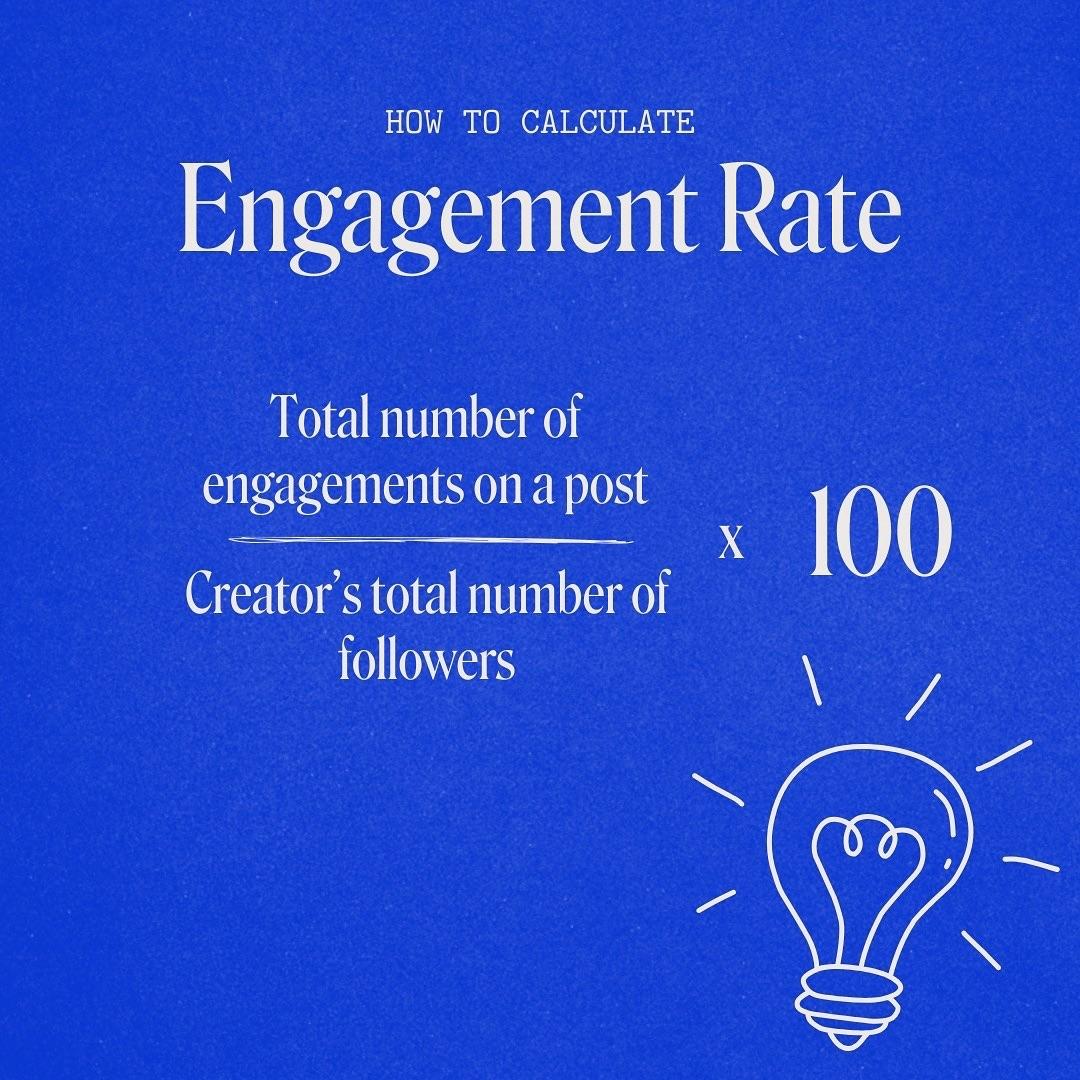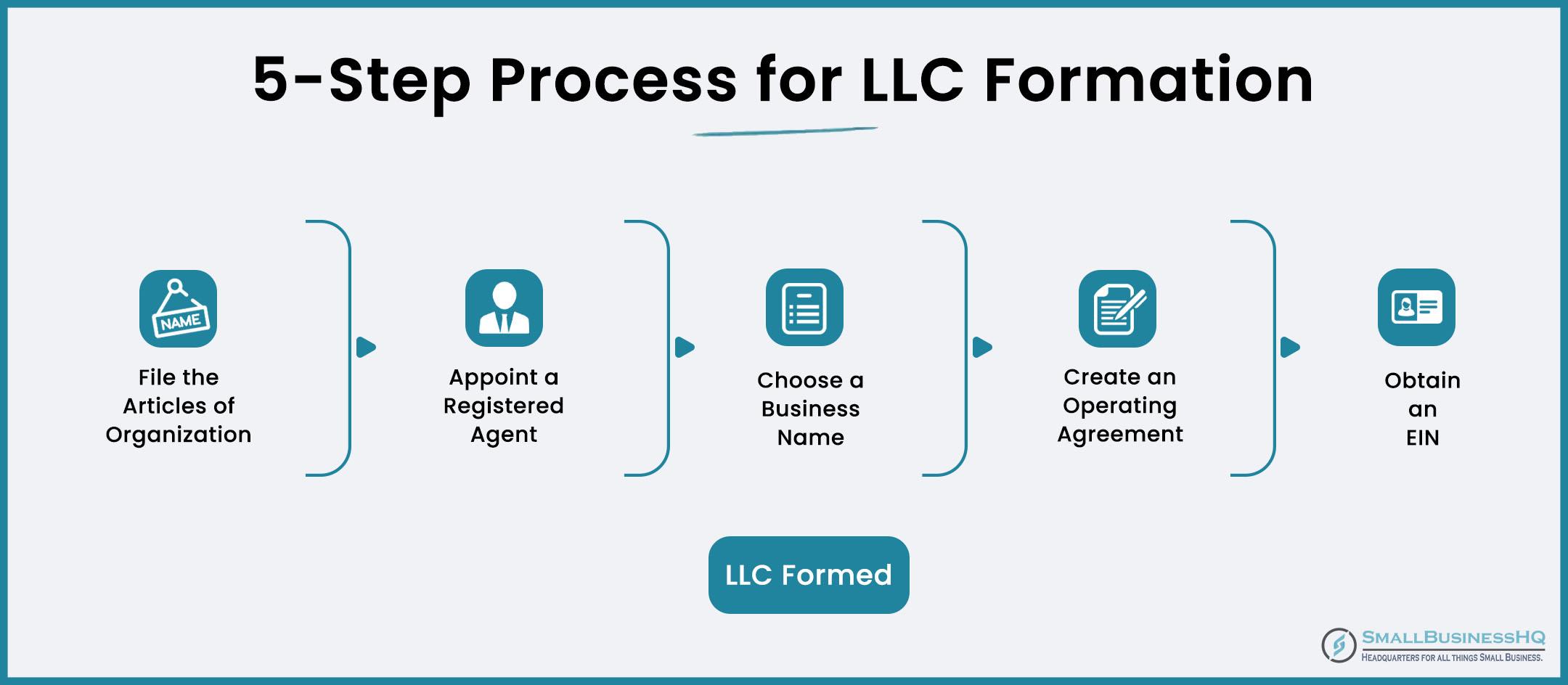
Are you feeling stuck in your current job, dreaming of a career that excites you but unsure how to make the leap without starting from scratch? You’re not alone! Many people find themselves at a crossroads, wishing to transition into a new field without losing the valuable skills and experience they’ve already built. The good news is that changing careers doesn’t have to mean hitting the reset button. With the right approach and a thoughtful plan, you can pivot to a new direction that aligns with your passions and goals—all while leveraging your existing expertise. In this step-by-step guide, we’ll explore practical strategies and actionable tips to help you navigate this exciting journey. So, whether you’re eyeing a creative role, a tech position, or something entirely different, let’s dive in and turn those dreams into reality!
Understanding Your Motivation for a Career Change
Transitioning to a new career can often feel like a daunting task, especially when it seems like you’re starting from scratch. However, understanding your motivation can provide clarity and direction as you make this leap. Ask yourself what drives you to seek change. Is it a desire for greater fulfillment, a need for better work-life balance, or the pursuit of a passion long left unpursued? Recognizing these motivations is key to successfully navigating your career shift.
Consider these common motivations for a career change:
- Seeking Growth: You might feel stagnant in your current position and crave new challenges that can help you develop professionally.
- Work-Life Balance: If your current job consumes your time and energy, you may yearn for a role that allows for more personal time.
- Passion Pursuit: Many individuals find themselves drawn to fields that ignite their passions, leading to a more satisfying career.
- Financial Incentives: Sometimes, a change is motivated by the pursuit of better financial stability or growth opportunities.
Once you’ve identified your motivations, it’s essential to align them with your next career steps. This alignment will not only guide your job search but also keep you motivated when challenges arise. Reflect on how your previous experiences and skills can complement your new career path. This will help you see that you are not starting from scratch but rather building upon a foundation of knowledge and expertise.
Additionally, engage in self-assessment exercises to further clarify your motivations. Tools such as personality tests, skill assessments, or even journaling can provide insight into what you truly value in a career. Understanding your strengths, weaknesses, and interests will help you identify roles that are not only a good fit but also align with your personal goals.
Networking plays a crucial role in this process. Reach out to professionals in your desired field and engage in conversations about their experiences. This can help you gain valuable insights and perhaps even uncover opportunities you hadn’t considered. Don’t hesitate to ask questions that allow you to explore the motivations behind their career choices.
Lastly, maintaining a positive mindset throughout your transition is vital. Embrace the idea that change, while challenging, is also an opportunity for growth. Remind yourself that every step taken in this journey is paving the way to a more fulfilling career. Keep your motivations at the forefront of your mind, and let them guide your decisions as you navigate this exciting new chapter in your professional life.

Identifying Transferable Skills You Already Possess
When contemplating a career shift, it’s essential to recognize that you likely have a wealth of skills that can be valuable in a new field. Identifying these transferable skills not only boosts your confidence but also helps you articulate your qualifications to potential employers. Here are some crucial steps to uncover your existing competencies:
- Reflect on Past Experiences: Take a moment to think about your previous jobs, volunteer work, or even hobbies. What tasks did you excel at? What responsibilities did you enjoy? Record these to identify patterns.
- Consider Soft Skills: Traits such as communication, teamwork, problem-solving, and adaptability are universally applicable. Think about how these skills have served you in various situations.
- Review Job Descriptions: Look at job postings for roles you are interested in. Highlight the skills they require and compare them with your background. You may find that you already possess many of these abilities.
- Seek Feedback: Don’t hesitate to ask colleagues, friends, or mentors about your strengths. They might point out skills you undervalue or have yet to recognize.
To further clarify your transferable skills, you can create a simple table that matches your existing skills with the requirements of your desired job. Here’s an example:
| Your Skills | Desired Job Requirements |
|---|---|
| Project Management | Ability to lead projects and manage timelines |
| Customer Service | Strong interpersonal and communication skills |
| Analytical Thinking | Problem-solving capabilities |
| Team Leadership | Experience in guiding and motivating teams |
Another effective way to recognize your transferable skills is by categorizing them into three main areas: Technical Skills, Interpersonal Skills, and Organizational Skills. This approach not only helps you see the full scope of your capabilities but also makes it easier to communicate them in your resume or during interviews.
As you compile your list, focus on quantifiable achievements. For instance, instead of saying, “I managed a team,” you could state, “I successfully led a team of 10, increasing project efficiency by 20%.” This not only highlights the skill but also demonstrates its impact.
Lastly, practice articulating these skills and achievements in a way that connects them to your new career path. Be specific about how your unique experiences make you an excellent fit for the roles you’re targeting. By doing this, you’ll not only stand out in applications but also feel more prepared and confident as you embark on your new career journey.

Researching Potential Career Paths That Align with Your Interests
When considering a career change, the first step is to explore potential paths that resonate with your personal interests and values. This can significantly enhance your job satisfaction and overall happiness. Here’s how to embark on this exciting journey:
Identify Your Interests: Start by listing activities that ignite your passion. Reflect on:
- Your hobbies and how they might translate into a career.
- Subjects you enjoyed during your education.
- Skills you excel at or want to develop further.
Research Career Options: Once you have a list of interests, delve into careers that align with them. Utilize resources like:
- Online job boards to find roles that match your interests.
- Professional networking sites to connect with individuals in your desired fields.
- Industry-specific forums and communities for insights and advice.
Consider Job Shadowing or Internships: Gaining firsthand experience can provide clarity. Reach out to professionals in your target roles and ask about shadowing opportunities or internships. This hands-on exposure can help you:
- Understand the day-to-day responsibilities of various positions.
- Evaluate if the work culture aligns with your values.
- Build valuable connections in your new field.
Evaluate Skills Transferability: Recognize that many skills are transferable across different careers. Create a table to map these skills:
| Your Current Skills | Potential Career Paths |
|---|---|
| Project Management | Operations Manager, Event Coordinator |
| Customer Service | Sales Representative, Client Relations Manager |
| Data Analysis | Market Researcher, Business Analyst |
Network and Seek Mentorship: Cultivating relationships in your desired industry can open doors. Attend industry conferences, workshops, or local meetups to:
- Expand your professional network.
- Gain insights from experienced mentors.
- Learn about unadvertised job opportunities.
Stay Informed: As you explore new paths, keep yourself updated on the latest trends and demands in those industries. Subscribe to relevant newsletters, follow key influencers on social media, and join professional associations to:
- Stay ahead of industry changes.
- Enhance your knowledge and skills continuously.
By actively researching and engaging with potential career paths that align with your interests, you can make a smooth transition without starting from scratch. Embrace the journey of discovery and let your passions guide you to a fulfilling new career!

Creating a Tailored Resume That Highlights Relevant Experience
When embarking on a career change, one of the most crucial steps is crafting a resume that stands out and emphasizes your transferable skills and relevant experiences. It’s essential to remember that hiring managers are not just looking for industry-specific qualifications; they want to see how your previous roles can add value to their company.
Start by identifying the key skills and experiences that align with your new career path. Take a close look at the job descriptions for positions you’re interested in and make note of recurring themes. You can then use these insights to shape your resume. Consider including the following:
- Transferable Skills: Highlight skills that are applicable across various fields, such as project management, communication, and problem-solving.
- Relevant Accomplishments: Focus on achievements that demonstrate your capability to adapt and succeed in different environments.
- Keywords from Job Descriptions: Incorporate specific terminology that resonates with the target industry to help your resume pass through Applicant Tracking Systems (ATS).
Next, structure your resume in a way that leads with your most relevant experiences. A functional or hybrid resume format can be particularly effective, as these formats emphasize skills over chronological work history. Here’s a simple layout to consider:
| Section | Description |
|---|---|
| Summary | A brief overview of your professional journey, highlighting key skills and aspirations. |
| Skills | A bulleted list of your top skills relevant to the new career. |
| Relevant Experience | A section outlining your past roles, focusing on tasks and achievements that correlate with the new career. |
| Education & Certifications | Include any relevant coursework, degrees, or certifications that bolster your qualifications. |
Additionally, don’t shy away from including volunteer work, freelance projects, or side gigs that showcase your abilities in your new field. These experiences can be just as valuable as paid positions and can demonstrate your commitment and passion for the career change.
make sure your resume is visually appealing and easy to read. Use clear headings, consistent formatting, and bullet points to break up large blocks of text. A polished, professional layout not only enhances readability but also demonstrates attention to detail—something that is highly valued across all industries.
Remember, this is your opportunity to tell a story that connects the dots between your past and future. By presenting a tailored resume that showcases relevant experience and skills, you’ll be well on your way to making a successful transition into a new career.
Building Your Professional Network in a New Industry
Transitioning into a new industry can feel daunting, but building a strong professional network is a key strategy that can make the process smoother and more rewarding. Think of your network as a bridge that connects you to opportunities, insights, and support from those already established in your desired field.
Start by identifying key players in your new industry. Research organizations, associations, and online communities related to your target field. Look for:
- Industry leaders and influencers
- Professional groups on LinkedIn
- Local networking events and meetups
- Webinars and conferences
Once you’ve pinpointed potential connections, it’s time to reach out. Craft a personalized message expressing your interest in their work and the industry. Mention a shared interest or a specific reason why you admire their career path. This approach sets a positive tone and increases the likelihood of receiving a response.
Don’t underestimate the power of informational interviews. These conversations provide invaluable insights and help you understand the nuances of your new industry. When requesting an informational interview, keep these tips in mind:
- Be specific about what you would like to learn
- Respect their time by keeping the meeting brief
- Follow up with a thank-you note
| Tip | Details |
|---|---|
| Be Genuine | People appreciate authenticity. Share your story and why you’re interested in their field. |
| Leverage Social Media | Engage with industry-related content on platforms like LinkedIn to increase visibility. |
| Be Consistent | Regularly check in with new contacts and share interesting articles or updates related to their work. |
In addition to reaching out to established professionals, consider joining relevant online forums and groups. Platforms such as LinkedIn Groups or specialized forums allow you to participate in discussions, ask questions, and offer insights. This active engagement showcases your commitment to the industry and helps you learn from others’ experiences.
Lastly, remember that networking is a two-way street. Be prepared to offer value to your connections, whether it’s sharing resources, providing feedback, or introducing them to others in your network. Building reciprocal relationships fosters a sense of community and can lead to fruitful opportunities down the line.
Gaining New Skills Through Online Courses and Workshops
In today’s fast-paced world, the ability to acquire new skills is more accessible than ever before. Online courses and workshops have revolutionized the way we learn, allowing anyone to pivot towards a new career with confidence and competence. Whether you’re considering a complete career overhaul or simply looking to enhance your skill set, these flexible learning options can set you on the right path.
One of the most compelling aspects of online courses is the diverse range of topics available. You can find programs tailored to various industries and interests, from tech and design to business and wellness. Here are some popular fields you might explore:
- Data Science: Learn to analyze data and drive insights.
- Digital Marketing: Master SEO, social media, and email marketing techniques.
- Web Development: Gain coding skills to build and optimize websites.
- Project Management: Understand methodologies and tools to lead teams effectively.
- Graphic Design: Unleash your creativity with design software and principles.
Another advantage is the flexibility that online platforms provide. You can learn at your own pace, fitting studies around your current job or personal commitments. Many courses are designed to be self-paced, meaning you can dive deep into subjects that interest you without the pressure of a strict schedule. This flexibility can significantly reduce the stress typically associated with career changes.
Also, consider the opportunity to learn from industry experts. Many online platforms collaborate with seasoned professionals who share their insights and experiences, providing you with valuable knowledge that textbooks alone can’t offer. This real-world context can enhance your understanding and make the learning experience much more relevant.
To help you choose the right course, you might find it useful to evaluate options using a simple comparison table:
| Course Provider | Course Length | Cost | Certification |
|---|---|---|---|
| Coursera | 4-6 weeks | Free / $39/month | Yes |
| Udemy | Varies | Starting at $19.99 | Yes |
| LinkedIn Learning | 1-2 hours | $29.99/month | No |
| edX | 6-8 weeks | Free / $149 for a certificate | Yes |
Networking is another crucial aspect of the learning process. Participating in online workshops and courses often opens doors to community forums, discussion groups, and even real-time Q&A sessions. Engaging with peers and instructors not only helps reinforce your learning but also expands your professional network, which can be immensely beneficial when transitioning into a new career.
don’t overlook the power of hands-on projects. Many online courses emphasize practical application, allowing you to work on real-world assignments or case studies. This experiential learning not only enhances your resume but also boosts your confidence, showing potential employers that you have not only theoretical knowledge but also the ability to apply it effectively.

Leveraging Informational Interviews to Uncover Opportunities
One of the most effective strategies to uncover hidden job opportunities is through informational interviews. These conversations allow you to gain insights into a field while simultaneously building a network that can be invaluable during your career transition. Informational interviews are not about asking for a job; they’re about learning and connecting.
To kick off, here are some practical steps to set up your informational interviews:
- Identify your targets: Research professionals in your desired field. Use platforms like LinkedIn to find individuals whose backgrounds resonate with your career aspirations.
- Craft a personalized message: When reaching out, personalize your request. Mention why you admire their work and how their insights could guide your career change.
- Be flexible with timing: Professionals are busy, so offer multiple time slots for the conversation. Be accommodating to their schedule.
- Prepare thoughtful questions: Prior to the meeting, develop a list of questions that explore their career path, the industry landscape, and key skills needed for success.
During the interview, focus on fostering a genuine connection. Here are some topics you might want to discuss:
- Career journeys: Ask about their professional path. What were the turning points? What challenges did they face?
- Industry insights: Inquire about current trends and what skills are in demand. This information can help you tailor your resume and skills development.
- Advice for newcomers: Seek their recommendations on how to break into the field. Often, they can share resources or suggest courses to enhance your skill set.
Post-interview, follow up with a thank-you note. Express your gratitude for their time and insights. This gesture not only reinforces the connection but also keeps the door open for future interactions. As you build these relationships, don’t hesitate to ask for referrals or introductions to others in the industry. Here’s a simple table to illustrate potential follow-up actions:
| Action | Purpose |
|---|---|
| Thank-You Email | Show appreciation and strengthen the relationship. |
| Request for Introductions | Expand your network and gain more insights. |
| Connect on LinkedIn | Maintain ongoing communication and updates. |
As you progress through your career change, remember that each informational interview is a stepping stone. The more you engage with industry professionals, the more confident and informed you will become. This proactive approach not only uncovers job opportunities but also positions you as a knowledgeable candidate when it’s time to apply.
Incorporating informational interviews into your career transition strategy is a powerful way to gain inside knowledge while expanding your professional network. Embrace the process, and you’ll find that the right opportunities will start to appear as you navigate your new path.

Crafting a Compelling Personal Brand for Your Career Transition
Transitioning to a new career offers a unique opportunity to showcase your talents and personal qualities in a fresh light. Crafting a compelling personal brand is essential in this journey, as it allows you to communicate your value to potential employers and differentiate yourself in a crowded job market.
Identify Your Unique Value Proposition: Begin by pinpointing what makes you stand out. Reflect on your previous experiences, skills, and passions. Ask yourself questions like:
- What are my top three strengths?
- How can my past experiences enrich my new role?
- What do I want to be known for in my new career?
Next, craft a personal brand statement that encapsulates your unique value proposition. This statement should be clear, concise, and reflect both your professional aspirations and your personality. For example:
| Before Transition | After Transition |
|---|---|
| Experienced Sales Executive | Dynamic Marketing Specialist with a passion for data-driven strategies |
| Customer Service Representative | Empathetic UX Designer focused on enhancing user experience |
Leverage Social Media: Platforms like LinkedIn are invaluable for building your personal brand. Optimize your profile by including your personal brand statement, a professional photo, and relevant experience. Share content that aligns with your new career path, engage with industry leaders, and connect with professionals in your desired field. This not only showcases your knowledge but also positions you as an active participant in your new industry.
Consistency is Key: Ensure that your personal brand is consistent across all platforms. Use the same bio, tone, and visuals to create a cohesive image. This builds credibility and helps others remember who you are and what you stand for. A strong brand can resonate with hiring managers, making them more likely to envision you in a role within their organization.
Network Strategically: Networking plays a crucial role in your career transition. Attend industry-related events, webinars, and workshops to meet people who share your interests. Don’t hesitate to reach out for informational interviews; these conversations can provide insights and possibly lead to job opportunities. Remember, every connection is a chance to share your personal brand with the world.
Lastly, seek feedback from trusted peers or mentors as you refine your brand. They can provide valuable perspectives and help you identify areas for improvement. By continuously evolving your personal brand, you not only enhance your career transition but also position yourself for future success.

Navigating the Job Market with Confidence and Strategy

Preparing for Interviews: Showcasing Your Unique Value
When it comes to interviews, standing out from the crowd is essential, especially during a career transition. You possess a unique set of skills that can significantly benefit your new field. The key is to showcase these skills in a way that resonates with your potential employer.
Begin by identifying the specific competencies that are transferable to your desired role. Common transferable skills include:
- Communication: Your ability to convey ideas clearly.
- Problem-solving: How you approach and resolve challenges.
- Collaboration: Your experience working within teams.
- Project Management: Your capacity to manage timelines and deliverables.
Once you have pinpointed these skills, prepare compelling stories that illustrate your experiences. Use the STAR method (Situation, Task, Action, Result) to structure your responses. This framework helps you articulate your achievements effectively and shows employers how your past experiences can drive future success.
Additionally, it’s important to align your unique value proposition with the company’s goals. Research the organization thoroughly, understanding their mission, values, and challenges. During the interview, highlight how your background and skills can contribute to their objectives. Here’s a simple table to help you organize this information:
| Company Goals | Your Value |
|---|---|
| Enhancing team collaboration | Experience in leading cross-functional teams |
| Driving innovation | Proven track record of implementing creative solutions |
| Improving efficiency | Expertise in streamlining processes |
During the interview, don’t shy away from discussing your career change. Frame your transition as a strategic decision, emphasizing your enthusiasm and commitment to your new path. Employers are often impressed by candidates who demonstrate resilience and adaptability.
practice makes perfect. Conduct mock interviews with a friend or career coach. Request feedback on your delivery and the clarity of your examples. This practice not only enhances your confidence but also helps you refine your storytelling skills, making your unique value clear and compelling.

Overcoming Fear and Embracing the Unknown in Your New Journey
Stepping into a new career can feel like jumping into a deep, uncharted ocean. It’s normal to feel a rush of anxiety as you consider all the possibilities and uncertainties that lie ahead. However, embracing this fear can transform it into a powerful catalyst for growth. The unknown is not a void to be feared, but a space of potential waiting to be filled with your unique talents and aspirations.
First and foremost, acknowledge your fears. Write them down. By identifying what specifically makes you anxious—whether it’s the fear of failure, the worry of not fitting in, or the concern over financial stability—you can start to address these feelings head-on. Here are a few common fears that many face during a career transition:
- Fear of Failure: The thought of not succeeding can be paralyzing.
- Fear of Judgment: Concerns about how others perceive your decisions can hold you back.
- Fear of the Unknown: Not knowing what to expect in a new environment can create stress.
Next, consider reframing your mindset. Instead of viewing these fears as obstacles, see them as stepping stones toward your new path. Visualize the outcomes you desire and focus on the excitement of new opportunities rather than the anxiety of potential setbacks. This shift in perspective can provide the motivation you need to push through discomfort.
Creating a support system is also essential. Surround yourself with individuals who inspire you—friends, mentors, or peers who have made similar transitions. Sharing your goals and fears with understanding individuals can create a sense of community, making the journey feel less isolating. Engage in discussions in online forums or local networking groups where you can exchange experiences and strategies with others who are navigating their own career changes.
One effective way to embrace the unknown is by taking small, calculated risks. Instead of diving headfirst into a new career, consider testing the waters through side projects or freelance work in your desired field. This allows you to gain experience and insight without fully committing to a complete overhaul of your life. Here’s a simple table to illustrate potential side projects based on common career shifts:
| Current Career | Potential Side Project |
|---|---|
| Marketing | Start a blog or social media consultancy |
| Finance | Offer budgeting workshops or freelance bookkeeping |
| Teaching | Create online courses or tutoring services |
equip yourself with the skills and knowledge necessary for your new career. Take advantage of online courses, workshops, and certification programs that can enhance your qualifications. This investment in your own development not only boosts your confidence but also reduces uncertainty, making the transition smoother.
Embrace the journey with an open heart and a curious mind. Every step you take, no matter how small, is a victory. As you navigate through the challenges, remember that each experience is a valuable lesson that prepares you for the next phase of your professional life. Your fear is merely a reflection of your potential—let it guide you, not hinder you.

Celebrating Small Wins and Staying Resilient Throughout the Process
Changing careers can feel like a daunting mountain to climb, but it’s crucial to celebrate each small win along the way. Acknowledging your progress not only boosts your motivation but also fuels your resilience. Every step you take is a testament to your dedication and a building block toward your ultimate goal.
As you embark on your journey, take a moment to reflect on your achievements, no matter how minor they may seem. Consider creating a list to keep track:
- Updating your resume
- Networking with professionals in your new field
- Completing an online course or certification
- Practicing your interview skills
- Receiving positive feedback on your portfolio or projects
Each of these milestones deserves recognition. They signify your growth and adaptability, proving that you are making strides toward your new career. Perhaps even set up a small reward system for yourself to celebrate these accomplishments. Whether it’s treating yourself to a favorite meal or indulging in a hobby, find ways to integrate joy into the process.
Staying resilient means embracing the ups and downs that come with change. It’s natural to encounter setbacks, but how you respond can make all the difference. When faced with challenges, try to reframe your thinking:
| Challenge | Reframe |
|---|---|
| Job rejection | Opportunity to refine my skills and approach |
| Feeling overwhelmed | A chance to prioritize and focus on what matters |
| Imposter syndrome | A reminder of my unique experiences and qualifications |
By shifting your perspective, you can transform stumbling blocks into stepping stones. This mindset not only helps you stay resilient but also encourages you to keep moving forward, regardless of how rocky the path may seem.
In addition, consider surrounding yourself with supportive individuals who understand your journey. Sharing your small wins with friends or mentors can amplify your motivation and remind you that you are not alone. A simple conversation can reignite your passion and remind you of the bigger picture.
Ultimately, the process of career change is a marathon, not a sprint. Embrace the journey, relish in your small victories, and cultivate resilience. Each step you take is a testament to your courage and determination to create a career that aligns with your passions and aspirations.

Continuing Education: Staying Ahead in Your New Career Field
Staying Ahead in Your New Career Field
Transitioning to a new career can be an exhilarating yet daunting experience. One of the most effective ways to ensure your success in this journey is through continuing education. Whether you’re looking to acquire new skills, deepen your knowledge, or stay updated with industry trends, investing in your education is key to thriving in your new role.
Consider the following strategies to enhance your learning and stay competitive:
- Online Courses: Platforms like Coursera, Udemy, and LinkedIn Learning offer a plethora of courses tailored to various industries. These flexible options allow you to learn at your own pace.
- Certifications: Earning industry-recognized certifications can set you apart from the competition. Research which certifications are valued in your new field and prioritize those.
- Networking Events: Attend workshops, seminars, and local meetups. These events not only provide learning opportunities but also connect you with professionals who can share insights and advice.
- Mentorship Programs: Seek out a mentor in your desired field. A mentor can provide valuable guidance, support, and resources to help you navigate your new career path.
Moreover, keeping a pulse on current trends and developments in your field is crucial. Consider subscribing to industry-related newsletters, podcasts, or blogs. Engaging with this content regularly will not only keep you informed but also present opportunities for further learning.
| Learning Resource | Benefits |
|---|---|
| Online Courses | Flexible and diverse topics |
| Certifications | Enhances credibility and skills |
| Networking Events | Building professional connections |
| Mentorship | Personalized guidance and support |
Don’t underestimate the power of lifelong learning. Many successful professionals credit their continued education as a driving force behind their career advancements. Embrace a mindset of curiosity—this will not only help you learn but also inspire continuous growth.
set aside time each week dedicated specifically to your professional development. Whether it’s working through an online course, reading relevant literature, or attending a workshop, consistent effort will yield substantial results over time.

Embracing Change and Adapting to Your New Work Environment
Transitioning to a new career can feel daunting, especially when you find yourself in an unfamiliar work environment. However, embracing change is the first step toward unlocking your potential in this new phase of your professional journey. The key is to remain open-minded and proactive as you navigate this shift.
To adapt effectively, consider the following strategies:
- Learn the Landscape: Take time to understand the dynamics of your new workplace. Observe how communication flows, who the key players are, and what the company culture feels like. This knowledge will empower you to adjust more smoothly.
- Build Relationships: Establishing connections with your new colleagues is essential. Engage in conversations, show genuine interest, and seek out mentors who can guide you through this transition. Relationships are vital for support and collaboration.
- Embrace Continuous Learning: Every new role comes with its own set of skills and knowledge. Invest time in learning about your new industry or position. Online courses, webinars, and workshops can be great resources for expanding your expertise.
- Stay Positive: Change often brings uncertainty, but maintaining a positive mindset can significantly influence your experience. Focus on the opportunities ahead rather than the obstacles. This shift in perspective can inspire creativity and resilience.
It’s also beneficial to reflect on your previous experiences and how they can be applied in your new role. Create a table to map your past skills to your current job requirements:
| Previous Skills | New Role Requirements |
|---|---|
| Project Management | Team Coordination |
| Customer Service | Client Relations |
| Analytical Thinking | Problem Solving |
| Communication Skills | Collaboration |
By recognizing how your previous skills align with your new environment, you can build confidence and demonstrate your value to your new team. Additionally, set achievable goals for yourself in this new setting. Start with small milestones that will help you adapt and grow. As you accomplish these goals, you will gain a clearer vision of your path forward.
Lastly, remember that change is a process. Give yourself grace as you adjust to your new work environment. Celebrate your progress, no matter how small, and stay committed to your career evolution. By fully embracing this change, you position yourself to thrive and make a meaningful impact in your new role.
Frequently Asked Questions (FAQ)
Q&A: How to Change Careers Without Starting Over
Q: Why would someone want to change careers without starting over?
A: Great question! Many people feel stuck in their current jobs but don’t want to lose the experience and skills they’ve already built. Changing careers doesn’t mean you have to wipe the slate clean. With the right approach, you can leverage your existing skills and experiences to transition smoothly into a new field while still moving forward in your career journey.
Q: What are the first steps to take when considering a career change?
A: Start by reflecting on what you enjoy doing and what you’re passionate about. Research potential careers that align with those interests. Don’t forget to assess your current skills—many of them are transferable! Networking is also crucial at this stage; connect with people in the fields you’re interested in to gain insights and advice.
Q: How can I identify transferable skills?
A: Look at your current role and think about the skills you’ve developed—communication, problem-solving, project management, or even technical skills. Make a list and do some research on your target career to see which of those skills are valued. You might be surprised at how applicable they can be!
Q: Should I consider additional education or training?
A: It depends on the field you’re moving into. Some careers might require specific qualifications, while others value experience more. Consider online courses, workshops, or certifications that can help bridge any gaps without requiring a full degree. Plus, many resources are accessible and can fit around your current job!
Q: How do I handle my resume and cover letter for a new career?
A: When crafting your resume and cover letter, focus on highlighting your transferable skills and relevant experiences rather than just job titles. Tailor each application to reflect how your background makes you a good fit for the new role. Make it clear that you understand the industry and how you can bring value.
Q: What role does networking play in changing careers?
A: Networking is your secret weapon! It’s not just about finding job openings; it’s about building relationships and learning from others’ experiences. Attend industry events, join professional groups, or reach out to friends and acquaintances who can provide insights or referrals. You’d be amazed at how many doors can open through a simple conversation!
Q: How can I stay motivated during this transition?
A: Career changes can be daunting, but remind yourself of the reason behind your decision. Set achievable goals and celebrate small wins along the way to keep your spirits high. Surround yourself with supportive friends and mentors who can encourage you and help you stay accountable.
Q: What if I face setbacks or challenges during my career change?
A: Setbacks are a natural part of any transition, so don’t get discouraged! Use them as learning opportunities. Reflect on what didn’t work and adjust your strategy. Persistence is key, and remember, every successful person has faced challenges on their journey!
Q: Any final tips for someone ready to make a career change?
A: Absolutely! Be patient and kind to yourself during this process. Embrace the uncertainty and view it as a chance for growth. Stay curious, keep learning, and don’t be afraid to take calculated risks. You’ve got this, and the future is full of exciting possibilities!
Final Thoughts
As we wrap up this guide on changing careers without starting over, remember that every step you take is a building block toward your new future. Transitioning into a new field might feel daunting, but with the right mindset and a clear plan, you can leverage your existing skills and experiences to create a fulfilling career path.
Don’t let fear hold you back—embrace the excitement of new possibilities! Whether it’s networking, upskilling, or simply redefining your personal brand, each action you take brings you closer to your goals. You’re not starting from scratch; you’re building on a solid foundation of who you already are.
So, take a deep breath and remember: change is not just about the destination but the journey as well. With persistence and passion, you can carve out a niche that not only fits your skills but also fuels your enthusiasm. Now, go out there and make that leap—your dream career is waiting for you!






